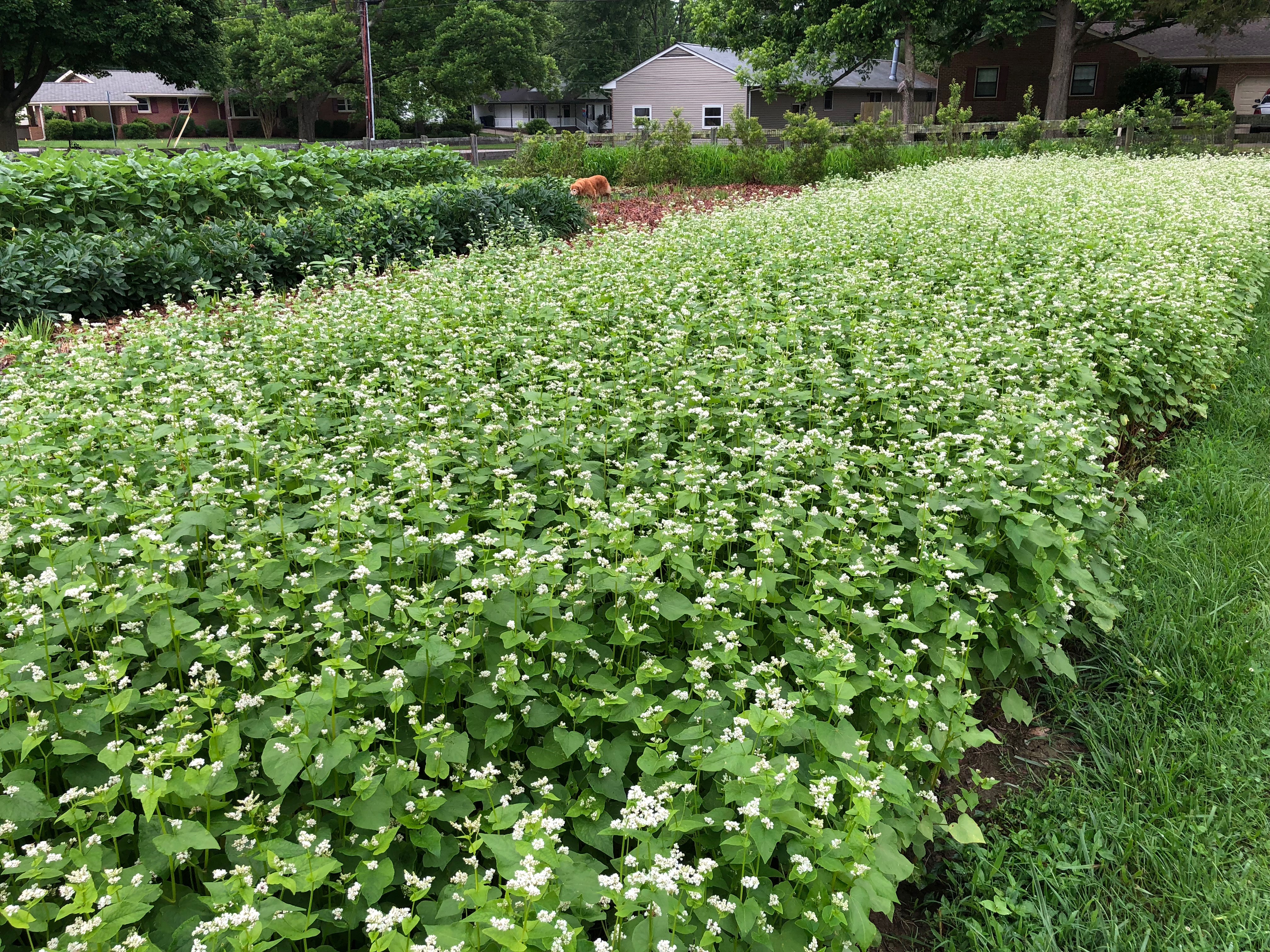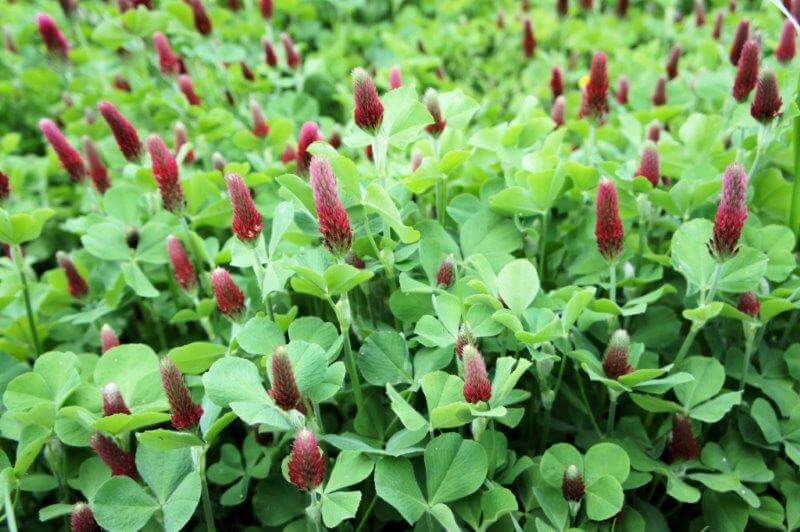Getting Started with Cover Cropping
Click here to view a printable version Get Started Cover Cropping
You could say I am a big fan of cover crops. No matter how small your garden or big your farm happens to be, there is a cover crop you can grow. It took me years to understand when to plant and when to terminate the planting. Now that I have figured out the simple steps and see all the benefits, my farm is rarely without a cover crop growing.
Cover crops build soil, suppress weeds, provide flowers for pollinators, habitat for birds and beneficial insects, and in general beautify the garden and farm. The following habits have made it easier for me to prioritize planting cover crop:
- When we remove a flower or vegetable crop from a bed and there isn’t another planting ready to go in, we plant cover crop seed immediately. This helps to suppress weed seeds from sprouting. Waiting a week allows weed seeds to sprout and get ahead of cover crop seed. If you wait two weeks, the bed will certainly be covered with weed seedlings.
- Always have cover crop seed on hand. If you don’t have it, you can’t plant it. The delay in planting will allow weeds to develop which results in more work.
I have two go-to cover crops that I grow and recommend. Buckwheat, a warm-season tender annual crop and crimson clover, a cool-season hardy annual crop. Both are easy to grow and can be incorporated into the soil with a shovel or with equipment. There are many types of cover crop but the two mentioned are good introductory varieties. When I first started out, I selected a couple of cover crops that I didn’t understand how to grow or when to terminate. It turned into a big, ugly, tough-to-deal-with mess! That bad experience turned me off of crop cropping for years. Don’t fall into that hole once you start looking at the many choices. Some varieties may require equipment to mow, crimp, or to incorporate into the soil.
Planting:
I use a hopper type seeder to spread the seeds in large areas. Hand tossing can work in a small garden. Cover crop seed needs to be covered with soil for the best germination. You can use a rake or till lightly going about one inch or so deep.
Water:
I try to time my planting when rain is on the way to help speed up germination of the cover crop seed. Lack of water will delay the germination process. Weed seeds on the other hand seem to germinate just fine without water. This gives them a head start on the cover crop by sprouting and growing more quickly and undermining the cover crop. Provide water if needed.
Terminating the Crop:
The best time to end the crop is when it is the most beautiful, during the flowering period. This prevents it from developing and dropping seeds. The plants are also at the most tender state so they breakdown more quickly. Leaving the cover crop 2 weeks beyond the start of flowering will result in tougher plants that take longer to breakdown and risks them becoming a reseeding nuisance.
To terminate the plants mow, crimp, or cut. Mowing and leaving the plant residue on the surface can create a mulch to plant through. Crimping folds the plant at ground level and kills it to create a layer of mulch to plant through. Using a hand sickle cut the crop down to create a layer of mulch to plant through. Tilling the mowed or cut plant residue into the soil adds organic matter.
Buckwheat
 Buckwheat is a warm season cover crop that grows fast and works well for suppressing weeds and building soil between crops. The stem is hollow, so it is quick to breakdown once incorporated into the soil. It can be easily turned in using a shove l or tiller. Plant in spring and summer into warm conditions. Cover seed with ¼” of soil. Plants will sprout and grow to full size in approximately 30 days. Recommended 3lbs per 1000 square feet.
Buckwheat is a warm season cover crop that grows fast and works well for suppressing weeds and building soil between crops. The stem is hollow, so it is quick to breakdown once incorporated into the soil. It can be easily turned in using a shove l or tiller. Plant in spring and summer into warm conditions. Cover seed with ¼” of soil. Plants will sprout and grow to full size in approximately 30 days. Recommended 3lbs per 1000 square feet.
Crimson Clover
 Crimson Clover is a cool-season cover crop that works great as aground cover for weed suppression and providing overwinter habitat for beneficial creatures. When turned into the soil in spring it adds organic matter and nitrogen. Plant 6-8 weeks before the first fall frost. Cover seed with ¼” of soil. Plants will sprout and grow into a low growing ground cover before winter. In early spring clover will resume growth and bloom. Recommended 1 pound per 1000 square feet.
Crimson Clover is a cool-season cover crop that works great as aground cover for weed suppression and providing overwinter habitat for beneficial creatures. When turned into the soil in spring it adds organic matter and nitrogen. Plant 6-8 weeks before the first fall frost. Cover seed with ¼” of soil. Plants will sprout and grow into a low growing ground cover before winter. In early spring clover will resume growth and bloom. Recommended 1 pound per 1000 square feet.
Hope this helps to get you started with cover crops!
Lisa Ziegler
Click here to view a printable version Get Started Cover Cropping
